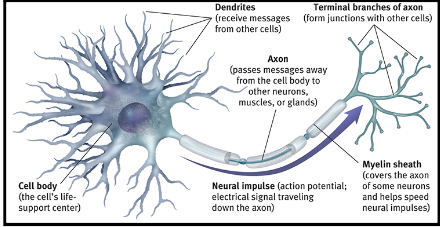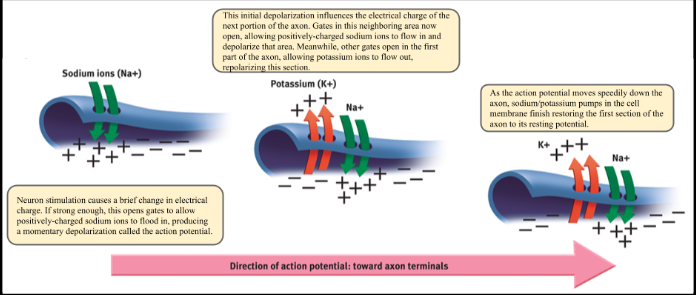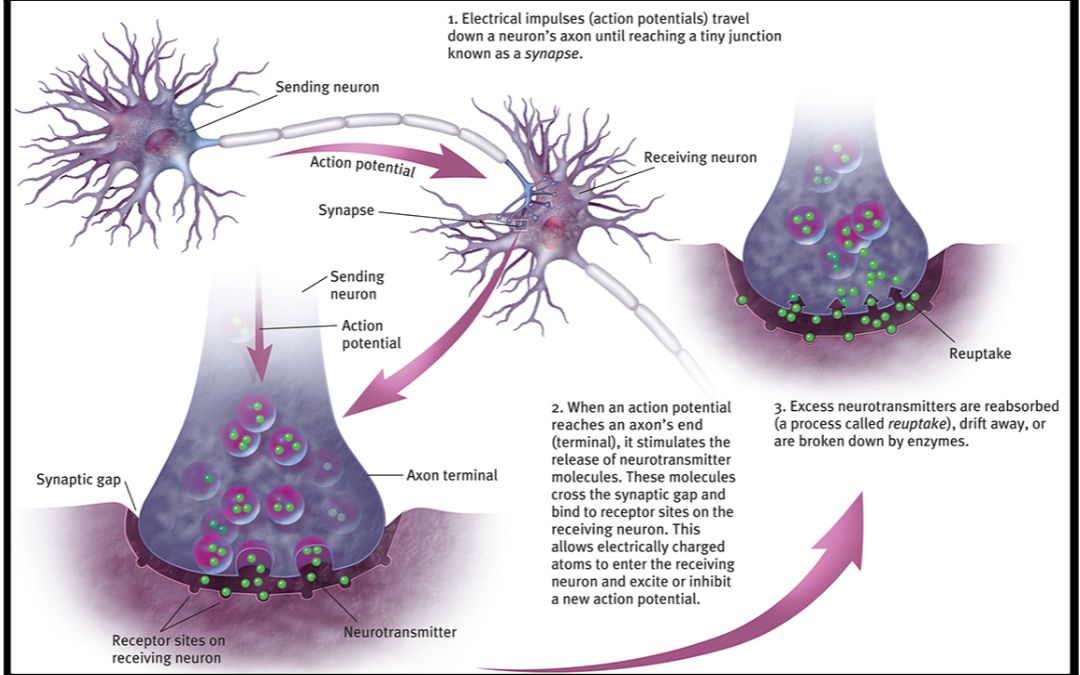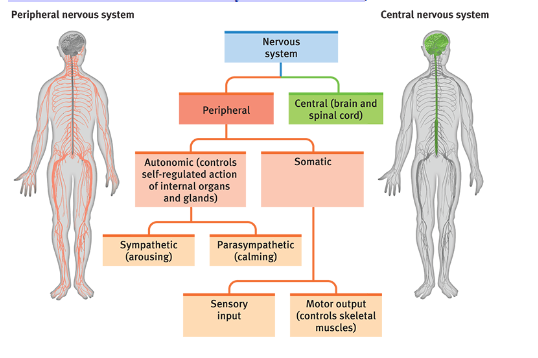psychology test 2
0.0(0)
0.0(0)
Card Sorting
1/125
Earn XP
Description and Tags
Study Analytics
Name | Mastery | Learn | Test | Matching | Spaced |
|---|
No study sessions yet.
126 Terms
1
New cards
Consciousness
our subjective awareness of ourselves and our environment; aids in our survival by helping us cope with new situations, act in our long-term interests and anticipate how others view us.
2
New cards
Spontaneous consciousness
Daydreaming, Drowsiness, Dreaming
3
New cards
physiologically-induced consciousness
Hallucinations, Orgasm, Food or oxygen starvation
4
New cards
psychologically-induced consciousness
Sensory deprivation, Hypnosis, Meditation (mindfulness)
5
New cards
When did consciousness re-emerge as a mainstream psychological concept?
in the 1960s when mental concepts re-emerged, and advances in neuroscience allowed researchers to study consciousness altered by drugs, hypnosis, and meditation
6
New cards
What had initially tried to replace consciousness?
Because consciousness was difficult to study without proper tools, behaviorism (i.e., the study of direct observations of behavior) had come to replace the study of consciousness and its various states
7
New cards
cognitive neuroscience
The study of brain activity is linked with the mental processes of perception, thinking, memory, and language.
8
New cards
Selective attention
The focusing of conscious awareness on a particular stimulus (being able to pick out a single voice in a sea of voices aka cocktail party effect)
9
New cards
Inattentional blindness
Failing to see visual objects when our attention is directed elsewhere (not being able to see a dog in a driver’s seat because you see a celebrity look-alike)
10
New cards
Change blindness
A form of inattentional blindness where one fails to notice changes in the environment (failing to notice a soda bottle disappear after a visual disruption)
11
New cards
Dual processing
the principle that information is often simultaneously processed on separate conscious and unconscious tracks
12
New cards
Parallel Processing
Processing many aspects of a \n problem simultaneously; generally \n used to process well-learned \n information or to solve easy \n problems. \\ Enables the mind to take care \n of routine business
13
New cards
Sequential \n Processing
Processing one aspect of a problem at \n a time; generally used to process new \n information to solve difficult \n problems. \\ It is best for solving new \n problems
14
New cards
Circadian rhythm
a pattern of biological functioning that occurs on a roughly 24‑hour cycle.
15
New cards
How does circadian rhythm affect the body
As morning nears, body temperature rises; it then peaks during the day, dips for a time in the early afternoon, and begins to drop again in the evening.
Thinking and memory improve as we approach our daily peak in circadian arousal. Age and experience can alter our circadian rhythm.
Thinking and memory improve as we approach our daily peak in circadian arousal. Age and experience can alter our circadian rhythm.
16
New cards
suprachiasmatic nucleus
a pair of cell clusters in the hypothalamus that controls circadian rhythm.
In response to light, the SCN causes the pineal gland to adjust melatonin production, thus modifying our feelings of sleepiness. (p. 99)
In response to light, the SCN causes the pineal gland to adjust melatonin production, thus modifying our feelings of sleepiness. (p. 99)
17
New cards
melatonin
sleep hormone
18
New cards
pineal gland
endocrine system gland that secretes melatonin
19
New cards
Awake and relaxed
Alpha waves, slow breathing
20
New cards
Sleep Stage NREM 1
Irregular brain waves (marks transition out of \n alpha state), Fleeting images, fantastic images (hallucinations); hypnagogic sensations
21
New cards
Sleep Stage NREM 2
Sleep spindles: rapid, rhythmic brain activity, Composes half of the entire time asleep
22
New cards
Sleep Stage NREM 3
Delta waves, Sound sleep; important for restoring energy and producing growth hormone; minimal awareness; \n children may wet bed; the stage where night terrors and \n sleepwalking occur.
23
New cards
REM (paradoxical sleep)
Rapid and irregular brain waves, Rapid eye movement; brain mimics waking activity; all \n muscles are paralyzed; heart rate rises, have vivid \n dreams; genital arousal.
24
New cards
What does research have to say on modern sleep cycles compared to a century ago?
Across the world, people are getting less sleep and having later bedtimes than older generations.
25
New cards
What are the effects of sleep loss?
Trouble concentrating, depressed mood, increased stress hormones, increased hunger-promoting hormones, increased inflammation of joints, decreased production of immune cells, reduced muscle strength.
26
New cards
Insomnia
Ongoing difficulty falling or staying asleep \\ Chronic tiredness. Reliance on sleeping pills and \n alcohol which reduce REM sleep and lead to tolerance
27
New cards
Narcolepsy
Sudden attacks of overwhelming sleepiness \\ Risk of falling asleep at a dangerous moment. Narcolepsy attacks usually last less than 5 minutes, but they can happen at the worst and most emotional times.
28
New cards
Sleep apnea
Stopping breathing repeatedly while sleeping \\ Fatigue and depression as a result of slow-wave sleep deprivation. Association with obesity (especially among men).
29
New cards
Sleepwalking/sleep \n talking
Doing normal waking activities while \n sleeping \\ Few serious concerns. Rarely remember events in the morning.
30
New cards
Night terrors
Appearing terrified, talking nonsense, sitting up, or walking around during NREM-3 sleep; different from nightmares \\ Doubling of a child’s heart and breathing rates during the attack.
31
New cards
Newborns 0-3 months
need 14-17 hours
32
New cards
Infants 4-11 months
need 12-15 hours
33
New cards
Toddlers \`1-3 years
need 11-14 hours
34
New cards
Preschoolers 3-5 years
need 10-13 hours
35
New cards
School-aged Children 5-12 years
need 9-11 hours
36
New cards
Teens 13-17 years
need 8-10 hours
37
New cards
Young adults 18-25 years
need 7-9 hours
38
New cards
Adults 26-64 years
need 7-9 hours
39
New cards
Seniors 65+ years
need 7-8 hours
40
New cards
psychoactive drugs
Chemical substances that alter perceptions and moods
41
New cards
substance abuse disorder
A substance abuse disorder is characterized by continued substance craving and use despite significant life disruption and/or physical risk
42
New cards
tolerance
The diminishing effect with regular use of the same dose of a drug requires the user to take larger and larger doses before experiencing its effect.
43
New cards
withdrawal
The discomfort and distress that follow discontinuing an addictive drug or behavior.
44
New cards
Alcohol
Depressant \\ Initial high followed by relaxation and inhibition \\ Depression, memory loss, organ damage, impaired reactions; reckless behavior, less inhibitions
45
New cards
Heroin
Depressant \\ Rush of euphoria, relief from pain \\ Depressed physiology, agonizing withdrawal
46
New cards
Caffeine
Stimulant \\ Increased alertness and wakefulness \\ Anxiety, restlessness, and insomnia in high doses; uncomfortable withdrawal
47
New cards
Nicotine
Stimulant \\ Arousal and relaxation, sense of wellbeing \\ Heart disease, cancer
48
New cards
Cocaine
Stimulant \\ Rush of euphoria, confidence, \n energy \\ Irritability, insomnia, hypertension, \n and seizures
49
New cards
Methamphetamine
Stimulant \\ Euphoria, alertness, energy \\ Irritability, insomnia, hypertension, seizures
50
New cards
Ecstasy (MDMA)
Stimulant; mild hallucinogen \\ Emotional elevation \n disinhibition \\ Dehydration, overheating, depressed \n mood, impaired cognitive and immune functioning
51
New cards
LSD
Hallucinogen \\ Visual “trip” \\ Risk of panic
52
New cards
Marijuana
Mild hallucinogen \\ Enhanced sensation, relief from \n pain, distortion of time, relaxation \\ Impaired learning and memory, increased risk of psychological disorders
53
New cards
Depressants
Drugs such as alcohol, barbiturates, and opiates that slow body function and reduce neural activity
54
New cards
Stimulants
Drugs such as cocaine, caffeine, nicotine, amphetamines, methamphetamine, and Ecstasy that excite neural activity and speed up body functions
55
New cards
Hallucinogens
Psychedelic drugs such as LSD that distort perceptions and evoke sensory images in the absence of sensory input
56
New cards
methadone
Methadone is a synthetic opiate prescribed to wear off the effects of heroin or other opiates; it is a depressant.
57
New cards
What occurs after repeated use of opiates?
The brain slows the natural production of endorphins and develops a tolerance to the drug.
58
New cards
Describe how socio-cultural influence may affect disordered drug use:
Modern media such as TV shows or movies often portray a glorification of drug use; adolescents are more susceptive to peer influence, leading to an overestimation of their peer’s use and excitement towards drugs.
59
New cards
Describe how psychological influence may influence disordered drug use:
Having prior psychological disorders such as depression, anxiety, OCD, eating disorders, etc., may lead to a greater risk of substance abuse.
60
New cards
Describe the Harm Reduction Model for substance use. Provide an example.
The Harm Reduction Model aims to reduce the psychological and physical harm associated with drug use by challenging myths and education.
Example: Providing clean needle exchange programs in order to decrease the risk of HIV among those who inject drugs.
Example: Providing clean needle exchange programs in order to decrease the risk of HIV among those who inject drugs.
61
New cards
Phrenology
Franz Gall speculated that bumps on the skull tell us about a person’s mental abilities and character traits. Although not the functions he proposed, different parts of the brain control different aspects of behavior.
62
New cards
How do biology and experience interact?
Your genes and your life experiences sculpt your brain. Your brain is constantly changing and building new pathways as it adjusts to little mishaps and new experiences.
63
New cards
plasticity
Plasticity is your brain's ability to change, especially during \n childhood, by reorganizing after damage or building new pathways based on experience
64
New cards
Neuron
Highly specialized cell that communicates information in electrical and chemical form; Takes information and produces output that causes thoughts, feelings, and behaviors

65
New cards
Dendrite
Extend from the neuron’s cell body, receive information from other neurons or from sensory receptor cells
66
New cards
Cell body
Processes nutrients and provides energy for the neuron to function, contains cell nucleus and keeps it alive
67
New cards
Axon
Long, fluid filled tube that carries a neuron’s messages to other neurons, muscles or glands
68
New cards
Myelin sheath
a white fatty covering wrapped around neuron axons, increases speed (wire insulation)
69
New cards
Glial cells
Form myelin sheath, removes cell waste, and provides physical and nutritional support to neurons
70
New cards
What is Action Potential?
Most neural signals are excitatory, somewhat like pushing a neuron’s gas pedal. Some are inhibitory, more like pushing its brake. If excitatory signals exceed the inhibitory signals by a minimum intensity or threshold, the combined signals trigger an action potential. (Think of it this way: If the excitatory party animals outvote the inhibitory party poopers, the party’s on.) The action potential then travels down the axon, which branches into junctions with hundreds or thousands of other neurons or with the body’s muscles and glands

71
New cards
What is the speed of neural impulses?
Depending on the type of fiber, neural impulses travel at speeds ranging from 2-200 MPH. \* Its top speed is 3 million times slower than that of electricity through a wire.
72
New cards
How do neurons communicate?
\

73
New cards
What happens at the synaptic gap?
Neurons send neurotransmitters (chemical messengers) across this tiny space between one neuron’s terminal branch and the next neuron’s dendrite or cell body.
74
New cards
reuptake
Reuptake occurs when the sending neuron reabsorbs excess neurotransmitters.
75
New cards
What two other things can happen to excess neurotransmitters after a neuron reacts?
Neurotransmitters can also drift away or be broken \n down by enzymes.
76
New cards
How do drugs and other chemicals alter neurotransmission?
Drugs and other chemicals affect brain chemistry, often by either exciting or inhibiting neurons’ firing. Agonist molecules \n increase a neurotransmitter’s action.
77
New cards
Acetylcholine (ACh)
Enables muscle action, learning, and memory. \\ With Alzheimer’s disease, ACh-producing neurons deteriorate.
78
New cards
Dopamine
Influences movement, learning, attention, and emotion. \\ Oversupply linked to Schizophrenia. Undersupply linked to tremors and decreased mobility in Parkinson’s disease.
79
New cards
Serotonin
Affects mood, hunger, sleep, and arousal \\ Undersupply is linked to depression. Some drugs that raise serotonin levels are used to treat depression.
80
New cards
Norepinephrine
Helps control alertness and arousal \\ Undersupply can depress mood
81
New cards
GABA \n (gamma-aminobutyric acid)
A major inhibitory neurotransmitter \\ Undersupply linked to seizures, tremors, and insomnia
82
New cards
Glutamate
A major excitatory neurotransmitter; involved in memory \\ Oversupply can overstimulate the brain, producing migraines or seizures
83
New cards
Endorphins
Neurotransmitters that influence the perception of pain and pleasure \\ Oversupply with opiate drugs can suppress the body’s natural endorphin supply
84
New cards
What are the functions of the nervous system’s main divisions
\

85
New cards
Motor Neurons
carry outgoing messages from the CNS to muscles and glands
86
New cards
Sensory Neurons
carry incoming messages from sensory receptors to the CNS
87
New cards
Interneurons
communicate with the CNS and process information between incoming and outgoing messages
88
New cards
Electroencephalogram (EEG)
Electrodes placed on the scalp measure electrical activity in neurons. \\ Symptoms of depression and anxiety correlate with increased activity in the right frontal lobe, a brain area associated with behavioral withdrawal and negative emotion.
89
New cards
Magnetoencephalography (MEG)
A head coil records magnetic fields from the \n brain’s natural electrical currents. \\ Soldiers with posttraumatic stress disorder (PTSD), compared with those who do not have PTSD, show stronger magnetic fields in the visual cortex when they view trauma-related images.
90
New cards
Positron emission tomography (PET)
\n Tracks where a temporarily radioactive form of glucose goes while the brain of the person given it performs a given task \\ Monkeys with an anxious temperament have brains that use more glucose in regions related to fear, memory, and rewards and punishment expectations.
91
New cards
Magnetic resonance imaging (MRI)
People sit or lie down in a chamber that uses magnetic fields and radio waves to provide a brain structure map. \\ People with a history of violence tend to have smaller frontal lobes, especially in regions that aid moral judgment and self-control.
92
New cards
Functional magnetic resonance imaging (fMRI)
Measures blood flow to brain regions by comparing continuous MRI scans. \\ Years after surviving a near plane crash, passengers who viewed material related to their trauma showed greater activation in the brain’s fear, memory, and visual centers than when they watched footage related to the 9/11 terrorist attacks.
93
New cards
Brainstem
Medulla (base) controls for your heartbeat and breathing; just above the medulla sits the pons, which helps coordinate movements and controls sleep
94
New cards
Thalamus
Sits atop the brainstem, a pair of egg-shaped structures that act as the brain’s sensory control center. The thalamus receives information for all senses except smell and routes the information to the higher brain regions. It also receives some of the brain's replies which it sends to the medulla and the cerebellum.
95
New cards
Reticular Formation
Inside the brainstem (between your ears); as the spinal cord’s sensory input flows up to the thalamus, some travels through the reticular formation, which filters incoming stimuli and relays important information to the other brain areas; controls arousal; electrically stimulating a \n sleeping cat’s reticular formation almost instantly produced an awake, alert animal; severing the formation causes a coma.
96
New cards
Cerebellum
The “little brain”; extending from the rear of the brainstem is the baseball-sized cerebellum; along with the basal ganglia, the cerebellum enables nonverbal learning and skill memory; helps judge time, modulate our emotions, and discriminate sounds and textures; with assistance from the pons, it coordinates voluntary movement.
97
New cards
Amygdala
Two lima-bean-sized neural clusters linked to aggression and fear; those with amygdala lesions often display reduced arousal to fear and anger-arousing stimuli
98
New cards
Hypothalamus
Just below (hypo) the thalamus is the hypothalamus; an important link in the command link chain governing bodily maintenance; some neural clusters in the hypothalamus influence hunger, others regulate thirst, body temperature, and sexual behavior; together, they help maintain a steady (homeostatic) internal state; helps govern the endocrine system via the pituitary gland; is linked to emotion and reward.
99
New cards
Hippocampus
A seahorse-shaped brain structure; processes consciousness, explicit memories (facts and events) and decreases in size and function as we grow older
100
New cards
Frontal lobes
Located just behind the forehead; executive control; involved in speaking and muscle movements (motor functions) and in making plans and judgments.